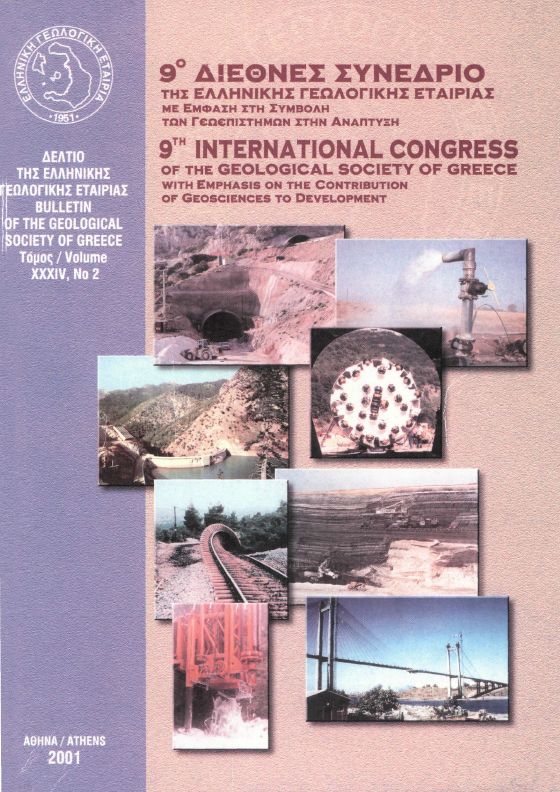Depositional environments of tertiary turbiditic sediments in Metsovo Basin, NW Greece

Abstract
Tertiary sediments in Metsovo area consist of submarine fan turbidite deposits accumulated in the proximal part of the basin and represent mostly inner fan. The most proximal part of the inner fan could be related to a shelf environment. Palaeocurrent data indicate mainly two directions. The main direction is SW and results mainly from groove marks. The second direction represents an WNW trend which results mainly from flute marks. The Metsovo area seems to have multiple feeders from North and East. The total thickness of the turbiditic deposits in Metsovo area is approximately 6800 m due to tectonic stacking and folding.
Article Details
- How to Cite
-
ANANIADIS, G., & ZELILIDIS, A. (2018). Depositional environments of tertiary turbiditic sediments in Metsovo Basin, NW Greece. Bulletin of the Geological Society of Greece, 34(2), 755–762. https://doi.org/10.12681/bgsg.17353
- Section
- Sedimentology

This work is licensed under a Creative Commons Attribution-NonCommercial 4.0 International License.
Authors who publish with this journal agree to the following terms:
Authors retain copyright and grant the journal right of first publication with the work simultaneously licensed under a Creative Commons Attribution Non-Commercial License that allows others to share the work with an acknowledgement of the work's authorship and initial publication in this journal.
Authors are able to enter into separate, additional contractual arrangements for the non-exclusive distribution of the journal's published version of the work (e.g. post it to an institutional repository or publish it in a book), with an acknowledgement of its initial publication in this journal. Authors are permitted and encouraged to post their work online (preferably in institutional repositories or on their website) prior to and during the submission process, as it can lead to productive exchanges, as well as earlier and greater citation of published work.







